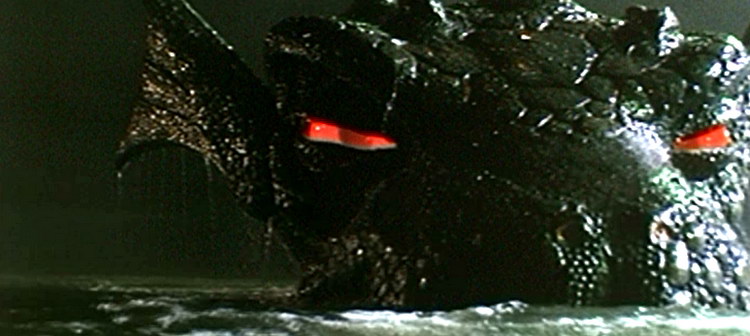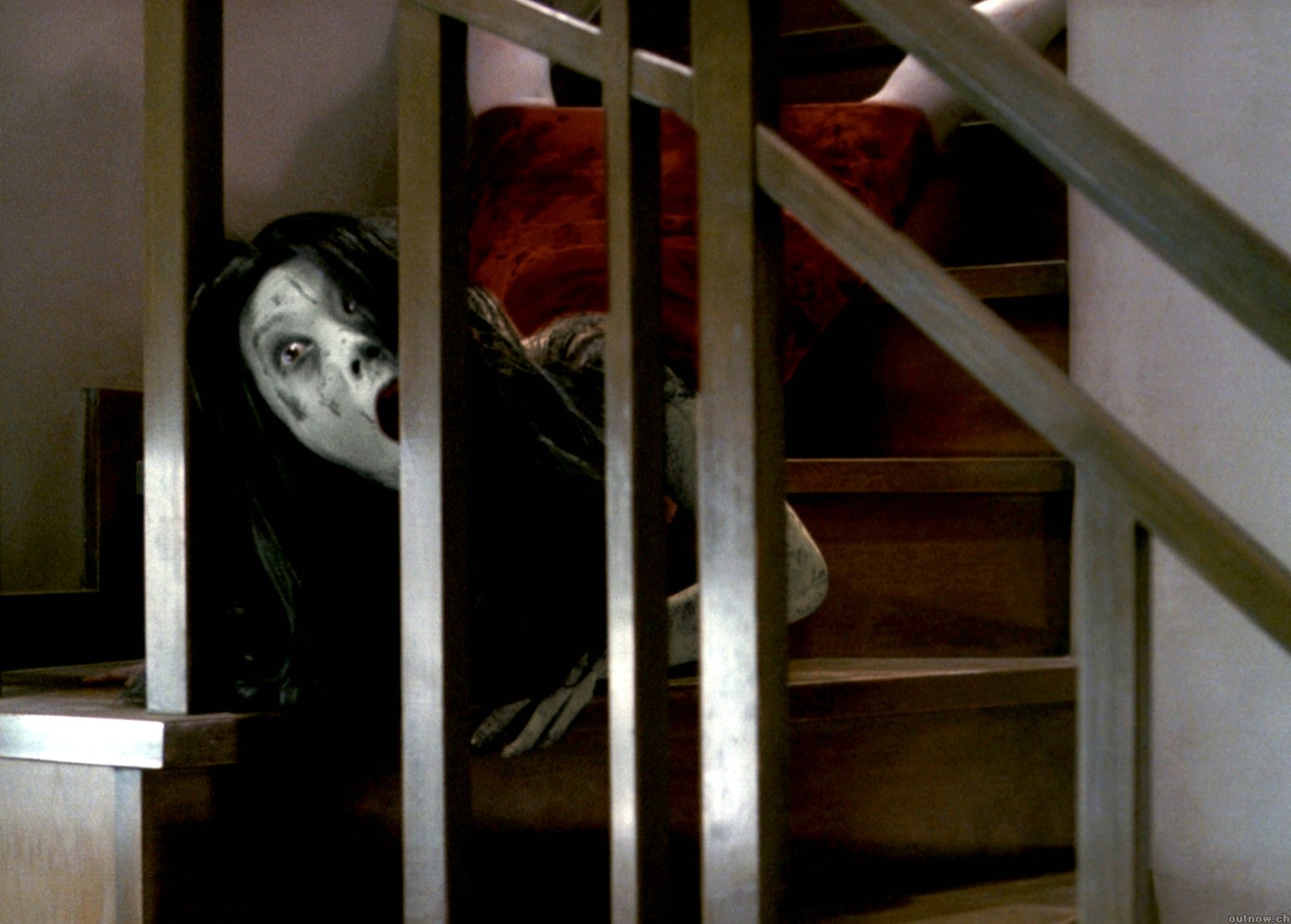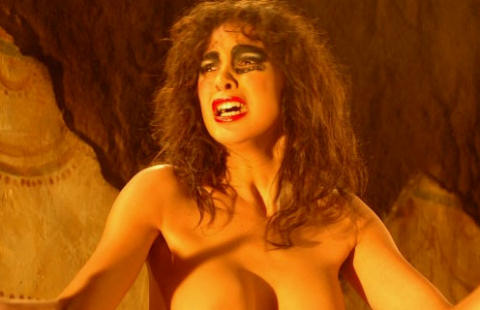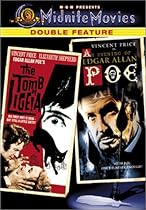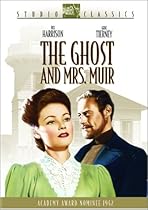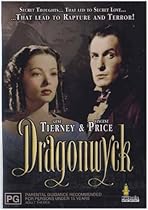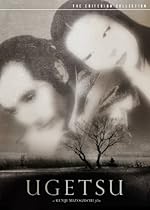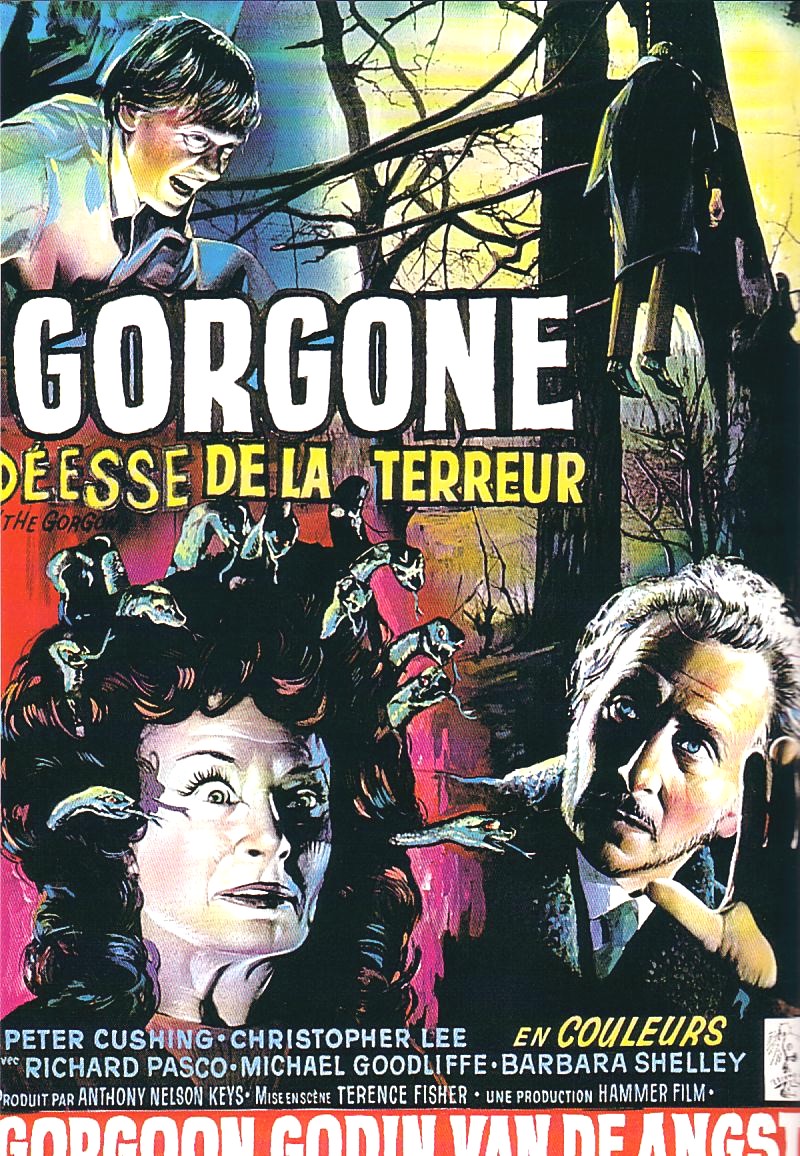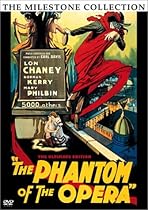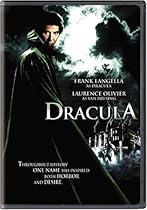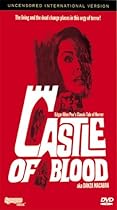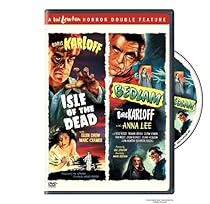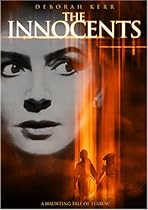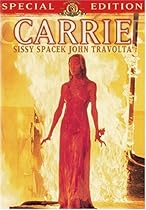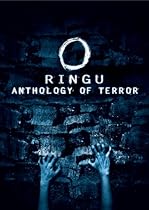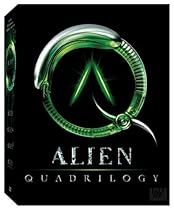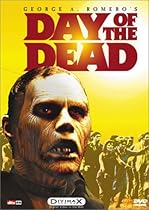Yes, the housing bubble has burst; home sales are down. The news sounds bad, but there is a silver lining: namely, it’s a buyer’s market! With the world’s latest haunted house movie, THE HAUNTING IN CONNECTICUT, opening today, what better time for interested shoppers to investigate the possibility of purchasing their very own haunted house?
With that in mind, Cinefantastique Online offers this catalogue of the finest spooky manses, decaying domiciles, awful apartments, murderous mansions, and cob-webbed castles ever imagined by demented writers and constructed by the Hollywood art department for your haunting pleasure. You want the Top Ten Haunted Houses? We have more than twice that many listings. These properties may not have always appeared in the best movies, but each has its own particular selling points.
A word of explanation: Ghosts and haunted houses are considered to be synonymous, and they do often go hand in hand; however, there is a distinction to be made. Most viewers understand that RING, although a ghost story, is about a cursed videotape, not a haunted house; however, a number of reference sources list THE SIXTH SENSE among haunted house movies – even though the ghosts are not limited to a particular location. All of the houses in our listings feature localized phenomena; the ghosts, ghoulies, and long-leggedly beasties that go bump in the night may make an occasional excursion to the outside world, but they are permanent residents whose ethereal existence seems somehow tied to their haunted homesteads.
CASTLES
Looking for something suitably grand and top-of-the-line? Castles tend to be more the province of vampires and/or evil aristocracy in the Gothic tradition, but there are a few that feature genuine ghosts.

Blackwood Castle in DANSE MACABRE (a.k.a. CASTLE OF BLOOD, 1964).
Lord Blackwood has listed his English family estate with us (a fine old Gothic ruin that perfectly embodies the archetype of a haunted house); however, it is not for sale or even, precisely speaking, for rent. Interested parties, however, are invited to spend the night, alone, free of charge – free, that is, except for a wager that you will not live to see the sunrise. Unlike the Allardyce House and the Belasco House (see below), Blackwood Castle is not haunted because of anything intrinsic to its nature; rather, it is merely been the scene of much murder and mayhem that results in the death of the body but not of the spirit, resulting in an impressive haunting. The castle features numerous amenities and selling points:
- Crypt (conveniently located in the cellar)
- Hypnotic painting (subject appears to be alive, eventually manifests in person)
- At least seven ghosts (as of last count). These are vampiric in nature, requiring the blood of the living in order to sustain themselves. They vary in appearance from perfectly normal to hideously corpse-like; in some cases, they are so beautiful and alluring that you might not mind never leaving.
- Pets: at least one black cat on premises
- Selling points: Visited (or at least glimpsed) by Edgar Allan Poe
- Known fatalities: 8
Buyer beware: Survival rate of previous guests who have accepted Lord Blackwood’s wager is zero.
Asking price: not for sale. Market value difficult to determine due to Lord Blackwood understandable reluctance to have the property appraised (the last attempt ended in disaster). Since the value derives from the ghosts, who could easily be dispatched bywithholding the annual victim, we would estimate its value to haunt-seekers at $4-million.
* * *

Castillo Maldito in THE GHOST BREAKERS (1940).
This crumbling Cuban Castle, located on a small island off the coast, is reportedly haunted by several phantoms – and a zombie! Some of these selling points may be a bit exaggerated; we have not been able to authenticate all phenomena as genuine, but then, that was typical of the many spooky mansions constructed during this era. Seen in films like THE BAT WHISPERS (1930), THE OLD DARK HOUSE (1932), and THE CAT AND THE CANARY (1939, these dilapidated dwellings feature creaking floor boards, whistling winds, secret panels, and hidden chambers – not to mention oddball residents as scary as any ghost. We avoid listing these properties in our catalogue, because most of them turn out not to be haunted. Yet Castle Maldito is an exception.
Amenities & Selling Points:
- Hidden treasure
- One authenticated (or at least not debunked) ghost. Although superficially similar to the decaying family mansion in CAT AND THE CANARY (which also starred Bob Hope and Paulette Goddard), Castle Maldito leaves at least one ghost unexplained at the end. This gives the castle claim to being Hollywood’s first truly haunted house. This historical importance does not come cheap.
Asking price: $1.5-million.
COUNTRY HOMES AND MANSIONS
Perhaps the most likely place to find a ghost is an an old mansion or country house. Haunting is especially prevalant in England, where the houses are older and have had more opportunity to aquire ghosts, but there are a few good ones in America, too.
The Allardyce House in BURNT OFFERINGS (1976).
This large Victorian mansion in the California countryside looks like a bit of a dump at first – run down, with paint chipped and boards peeling – but if you give it a chance, it’s a real fixer-upper that requires amazingly little effort on the part of its (human) renters. This is one of those rare haunted houses that seems to be malevolent in its own right: there are no signs of surviving personalities; the house itself is the haunt.
Amenities & Selling Points:
- The house comes equipped with a pool, but swimmers are advised to beware of unexpected waves.
- Self-reparing home. Just move in, and in no time at all the house will almost literally grow on you, shedding its old shingles like a snake shedding its skin, to reveal the glossy appearance hiding beneath the old facade.
- Known fatalies: 3
Buyer Beware:
- The upper chimney may not be stable, so keep your eyes open for falling bricks.
- The upper window (to Mrs. Allardyces’ room) probably needs to be replaced.
- The rent is reasonable, but there are strings attached, such as having to leave food outside an upper room for old Mrs. Allardyce, an apparent (and unseen) agoraphobic who insists on remaining at home, even when strangers have rented the place.
Asking price: not for sale. Market value varies, most recently appraised at $750,000.
* * *

The Belasco House in THE LEGEND OF HELL HOUSE (1974).
This is one of the premiere properties in our catalogue, the so called “Mount Everest of Haunted Houses.” Lovingly designed by original owner Emeric Belasco in 1919, this extensive mansion features ornate quarters, spacious living areas, and its own chapel.
Amenities and Selling Points:
- Unlike most of the houses in our catalogue, this English mansion was deliberately constructed to be a “haunted house”: it features an innner sanctum sheathed in lead to create a sort of battery containing psychic energy.
- This power source fuels a wide range of psychic phenomena, both mental and physical: ectoplasm, shaking tables, self-igniting fireplaces.
- Guests may also enjoy the amorous attention of an unseen visitor at no extra cost.
- Number of ghosts: one (but appears to be more)
- Confirmed fatalies: 40
- Pets: There is a sort of house mascot in the form of a black cat, who gives new meaning to the phrase “bad kitty!”
Buyer Beware:
- Those with repressed sexual desires and/or a naive faith in their own ability to exorcise the house are advised to say away.
- Watch out for spinal and/or leg injuries.
Asking price: $9-million
* * *

Bly House in THE INNOCENTS (1960).
This excellent English country mansion is one of the jewels in our crown, a beautiful property with high turrets, large rooms, a lake, and expansive grounds (although the surrounding terrain is a bit treacherous, especially if you have tipped one too many at the local pub). As with Blackwood Castle, there is nothing inherent in the structure of Bly that makes it haunted; it simply happens to be inhabited by ghosts.
Amenities and Selling Points:
- Number of ghosts: 2, Quint and Miss Jessel. These are a rather quiet, incommunicative, and diffident pair, given to appearing at unexpected moments, more for the sake of causing mental unease than for actually doing anything overtly malevolent. However, presence can be quite disconcerting when they make the effort, with shadows and voices combining for a nightmarish effect in the wee hours of the morning.
Buyer Beware:
- Several residents have claimed not to see any ghosts at all in Bly.
- Please be advised that we do not recommend this property for families with children, who seem to be peculiarly susceptible to the influence of Quint and Jessel.
- If you require servants, try to hire a governess who is (1) can swim and (2) is not a neurotic spinster given to doing more harm than good while trying to defend her charges against a supernatural conspiracy.
Asking price: $3-million
* * *

The Dutch Colonial House in THE AMITYVILLE HORROR (1979 & 2005).
This lovely home on Ocean Avenue on the South Shore of Long Beach, New York is one of the most famous properties in our catalogue, but it no longer attracts the attention of most serious shoppers. It was quite popular back in 1979, but since then the value has dropped precipitously, thanks to scurilous rumors that it may not actually be haunted; in fact, there are some who say that the whole thing was made up. Nevertheless, the property’s lovely facade, with upper front windows that suggest menacing eyes, is quite an attractive selling point for buyers who require only that their house look haunted.
Asking price: $500,000.
* * *

Fort Marmorus in THE BLACK CAT(1934).
Or more precisely, the house built by Satanic architect Hjalmar Poelzig upon the remains of the fort. Unlike most of the houses listed in our catalogue, this one has a distinctly modern look – bright, with clean lines and wide open spaces; fortunately, there are some dark corridors, for tradition’s sake. Whether or not the house is, strictly speaking, haunted, is another matter. Rather like our other Poe-inspired property, the House of Usher (see below), Poelzig’s manor seems embued with psychic influences, in this case the result of the many hundreds of souls who perished on the battlefield during the first world war; the skeptical may consider this to be “supernatural baloney,” but some visitors have succumbed to the uneasy atmosphere, turning temporarily “mediumistic” under its palpable influence.
Amenities & Selling Points:
- Located conveniently close to a cemetery (see picture)
- Numerous glass cases displaying the preserved bodies of former wives.
- Dynamite in basement for easy self-destruct
- Confirmed fatalies: 100s – or even thousands – if one counts those who died on the surrounding battliefields.
Buyer Beware:
- Even the phone is dead.
- While this house may not be for everyone, it is an unusual find for just the right purchaser, one who doesn’t require howling banshees and clanking chains, but prefers a more subtle shade of psychic influence.
Asking price: $1-million.
* * *

Gull Cottage in THE GHOST AND MRS. MUIR (1947).
Other realtors may hesitate to show this house, for fear of its haunted reputation, but we are more than eager to go the extra mile on your behalf, assuming that you will not be intimidate by the ghost of a brusque British sea captain. The cottage is a quaint, comfy abode witha nautical theme to its decor, and the view of the ocean is beautiful. Quiet, serene, and beautiful, it is a perfect seaside home for a widow raising a child. If not for an unfortunate accident with a gas lamp, it would not be haunted at all; fortunately, Captain Gregg is one of the most interesting and accommodating of ghosts – if you can get on his good side. If you are concerned about the propriety of living under the same room with a man to whom you are not married, just remember: he’s a ghost, so he doesn’t have a body.
Amenities:
- Number of ghosts: 1 (or 2)
- Captain Gregg is very effective at removing unwanted guests
Asking price: $1-million
* * *
The Haunted Mansion in THE HAUNTED MANSION (2003).
This is another property we are eager to unload. The house itself looks great, and its name is certainly promising, but the ghosts inside just don’t cut it. They try their best, but they’ve got no real spirit. They’re less like phantoms from the beyond than like…recycled gags from a theme park attraction.
Asking price: $300,000
* * *

Hill House in THE HAUNTING (1963). Built by Hugh Crain for his young wife (who died on the way to seeing it) this certainly the jewel in our crown, our most prized and coveted listing. Why? Because of all the haunted houss in this catalogue, this is the one that appears to be self-haunting. Many have died there, and indeed some may have remained in spirit form, but Hill House appears to have been born bad – a malign place before the first resident ever set foot in it – and those who perished within are more victim than ghosts. In short, there is little chance that whatever walks there will be exorcised as long as the house itself remains standing, which it has done for 80 years and might do for 80 more. It is an expert if eccentric piece of architecture, with no right angles; although the tiny variations are individually imperceptible to the eye, they add up to a virtual maze, wherein one can never be sure what lurks beyond each new door. The construction is superb: walls are upright; bricks meet neatly; floors are firm. Current owner has considered reconverting the building into a nightclub, but no plans are in the works.
Amenities & Selling Points:
- The avid psychic investigator will be pleased to find that the house offers a distinctive “cold spot” (the heart of the haunting).
- Musical instruments do not quite play themselves but they do resonate with ambient tones.
- Doors close by themselves when not watched; when they are watched, these closed doors bend inward as if pressed by some sinister unseen force from outside.
- Loud pouding noises at night
- Confirmed fatalities: 5
- Number of ghosts: the haunt does not manifest surviving, invididual personalities
Buyer Beware:
- Staircase in need of repair.
- Treacherous driveway
- Look out for the writing on the walls
- If you feel a hand holding yours in the night, for god’s sake, turn on a light to confirm whether it is indeed your fellow investigator, frightened into silence, or…something else.
Asking price: $10-million
* * *

The House of Usher in THE FALL OF THE HOUSE OF USHER (1960).
This ancient family mansion might not appeal to the average avid haunt fan, but it would be the perfect purchase for a buyer with the proper aesthetic appreciation. The problem is that it is not, technically, a haunted house; rather, it seems to be imbued witha miasma of intangible atmosphere. Even Hill House, by the end, appears to contain at least one genuine ghost, but the House of Usher really is its own monster – a vessel for the accumulated decadence of the family that has inhabited it for so long. This manifests in the occasional balustrade giving way (was the wood rotted, or was the housetrying to dispose of an unwanted guest?) and in the general decline of the two surviving family members, one of whom suffers from catalepsy.
Amenities & Selling Points:
- Family crypt conveniently located in basement
- Confirmed fatalies: the entire Usher family
- Number of ghosts: none (unless you count their appearance in a dream)
- The house is the monster
Buyer Beware:
- The house is in need of some repair; in particular, that big crack running through the outside wall needs to be fixed before the entire structure splits in two and sinks into the tarn.
- If you bury someone in the crypt, make sure the door is locked – so they can’t get out!
Asking price: $1-million.
* * *
The Old Country House in THE HOUSE THAT DRIPPED BLOOD (1970).
We have just about given up on this one. The previous retailer assured us that this house was some kind of karmic balance adjuster, dishing out just deserts to its inhabitants according to what they deserved. But on further investigation, we discovered that the house – despite its notorious name – had little or no blood on its…er, hand? (No – well how about no blood on its window panes?) The victims either died in other locations (like a wax museum), were felled by problems that pre-dated their residency, or brought into the house outside objects that were the real culprit (like a mysterious vampire’s cloak). It’s not a bad piece of property, but haunted?
Confirmed fatalities: 5 (not counting those who died outside the house)
Asking price: We’d like to unload it for $250,000.
* * *

The Remote Country House in THE OTHERS (2001).
This graceful estate on the isle of Jersey is somewhat in the style of Bly House. In the manner of haunted houses, it is big and dark and beautiful. It features the traditional fog-bound atmosphere, but with an interesting distinction: the fog seems to be literally impenetrable, as if the house were shrouded from the outside world, cut off in some kind of limbo land all its own.
Amenities & Selling Points:
- A piano plays itself in an empty room.
- A figure that initially presents as an innocent child turns out to be a hideous hag
- Confirmed fatalities: 3 (not counting a husband who died overseas in the war)
- Number of ghosts: 3, 6, or 7 (depending on the occasion)
Buyer Beware: Residents may expect to experience different phenomena, depending on their point of view.
Asking price: $1.5-million.
* * *
The Winward House in THE UNINVITED (1944). Like Gull Cottage, this is a lovely seaside residence located conveniently close to the ocean. It does not provide the outward appearance of being haunted; consequently, it has no trouble aquiring residents unprepared for the phenomena within. Up until 1944, most old dark houses turned out not to be haunted after all; following the comedic THE GHOST BREAKERS (1940), this is probably the first Hollywood movie to present a genuine haunted house seriously. This lends the property, with its muted thrills and subtle suggestions of horror, an almost inestimable historical value.
Amenities & Selling Points:
- Cold spots
- Flowers that wilt in the blink of an eye
- The melancholy sobbing of an unseen woman
- Confirmed fatalities: 3
- Number of ghosts: 2
Buyer Beware: that seaside cliff is treacherous!
Asking price: $5-million.
HOTELS
Perhaps you are not looking for a permanent residence but only a place for a pleasantly haunted stay? Or maybe you are looking to get into the haunt business yourself – purchase a property and rent it out to others? Here are some prime properties that should interest you.

The Overlook Hotel in THE SHINING (1980).
This is another one of the great haunted properties, one that dwarfs most of the competition. Built on the remains of an old Indian burial ground, the Overlook features high ceilings and brighlty lit rooms that are virtually the opposite of traditional haunted house decor, and yet the atmosphere is all the more effective because of it. The isolated location adds to the allure, and residents may rest assured that it is inhabited by enough ghosts to fill a dozen other haunted houses. Of particular note are the mysterious woman in Room 237 and the mysterious set of playful twins in the corridor. There is also a lovely band playing old-fashioned dance music, a helpful butler, and – best of all – a bartender named Lloyd who likes to offer drinks on the house. It is hard to say whether the Overlook was born bad or became bad as the result of the people who died there; it’s a sort of chicken-or-the-egg question. However, it got that way, it is safe to say that this Hotel is one of the most haunted places on the planet.
Amenities & Selling Points:
- A hedge maze. If you have some time on your hands, you might try your skills and finding your way in and out, but try to pick a day without snow.
- A convenient elevator service for those not frightened by the sight of enough blood to fill a dozen Dario Argento movies
- Long corridors great for riding your big wheel
- Confirmed fatalies: 6 (but obviously many more, judging from the number of ghosts)
- Number of ghosts: too numerous to count
- Your money’s no good here – which means more than enough free phantom booze to intoxicate a recovering alcoholic
Buyer Beware: The location is extremely isolated in the snowy winter season, so take care that nothing happens to the battery in the snow mobile.
Asking price: $8-million.
* * *

Seven Doors Hotel in THE BEYOND (1981).
Outwardly, this Louisiana hotel is no match for the Overlook, but it does have one unbeatable thing going for it: it’s built on one of the Seven Gateways to Hell! This puts the hotel in that special category of properties that will always be haunted, regardless of who died there. Yes, the ghosts of the dead are restless within its walls, but that gateway is responsible for a far more apocalyptic form of supernatural mayhem.
Amenities & Selling Points:
- Confirmed fatalities: 3(not counting those who died elsewhere)
- Number of ghosts: Only a few are identifiable, but there appear to be many more – perhaps infinite
- The gateway to hell not only revives dead souls and reanimates bodies into zombies; it also bends the very fabric of reality, teleporting unsuspecting victims literally to Hell and Gone – also known as the Sea of Eternal Darkness. You don’t get amenities like that in the Overlook!
Asking price: $5-million.
SUBURBS AND APARTMENT LIVING
City ghosts were once an anomaly; spirits used to keep to isolated locations: mansions and castles or at least houses set well apart from the neighbors. In the modern era, however (perhaps due to the population explosion), phantoms have been forced to seek residence in more highly populated areas. This is a great advantage to haunt enthusiasts who would like to purchase a ghost-invested property without givng up the benefits of city life.
The Freeling House in POLTERGEIST (1982).
This is definitely one for bargain hunters – we are slashing prices way, way, way down! It turns out that it wasn’t really the house that was haunted; it was the damn television that acted as a portal to the afterlife, allowing all manner of spirits to enter the land of the living. Now the TV’s gone, and so are the ghost.
Asking price: $250,000
* * *
The House in HOUSE (1986).
This is a model that was quite popular in its day, but the market value has fallen more than average for this kind of property. Buyers want something new, or they want the classics. These mid-level haunted houses are all right for brief visits, but no one much wants to live there, especially when the haunting seemed so specific to the previous owner, rather than a part of the house’s nature.
Asking price: $250,000
* * *
The Rundown Apartment House in DARK WATER (2001 & 2005).
One of the small, dingy rooms in this building would be a terrible place for a divorced mother to raise her child – even if the place were not haunted. Unfortunately, a little girl died there a while back, and though not outright malevolent, she is downright scary in her supernatural quest to secure a surrogate mommy.
Amenities & Selling Points:
- Confirmed fatalities: 2
- Number of ghosts: 2
Buyer Beware:
- Watch out for leaky faucets, bathtubs, etc.
- Don’t let your kids play on the roof, and especially don’t let them climb up on the water tank!
Asking price: not for sale, but rent is cheap – even if not haunted, this place should be condemned.
* * *

The Saeki Residence in THE GRUDGE (2004).
Externally inauspicious, this is in fact one of the most intensely haunted properties in our catalogue, thanks to three malevolent yūrei residing there: Kayako, Takeo, and Toshio. The death of the three familiy members (a murder-suicide perpetrated by father Takeo) left a curse on the property, resulting in an extremely high fatalities among subseqeunt residents, besting many of the more elaborate models; just about everyone who passes into its portal succumbs. Despite its conventional appearance, this haunted house engenders intense feelings of dread and apprehension at the mere thought of crossing its thresshold. The house has been seen in four Japanse JU-ON movies and two American GRUDGE films. Of these, THE GRUDGE implicity suggests that the curse falls only on people who have entered the Saeki House, raising the property’s importance to the haunting – and thus its value – over the Japanese predecessors.
Amenities & Selling Points:
- A lovely staircase, perfect for making a memorable entrance (especially if you like crawling on your hands and knees)
- Pets: one black ghost cat
- Confirmed fatlities: 8 (not counting those who died elsewhere)
- Number of ghosts: 3
- Like the Seven Doors Hotel, the Saeki House can bend reality – in this case time, creating weird anomalies in which characters from the present can view the past and perhaps be viewed (or at least sensed) in return
Asking Price: $7-million
* * *
The Victorian Mansion in THE CHANGELING (1981).
This lovely old structure perfectly conforms to everyone’s idea of what a haunted house should be: it’s big, imposing, old, and spooky, with more than enough room for plenty of ghosts. In point of fact it is not a particularly evil place, and the haunting is limited to the ghost of a single murdered child – a troubled but not particularly malevolent spirit of the type that cannot rest peacefully until justice has been rendered. Whatever the ghost’s intentions, the effect is suitably unnerving, creating an effective haunting that should please those who enjoy their ghosts that raise the hair on the back of their necks rather than jumping out and screeching “Boo!”
Asking price: $2-million.



